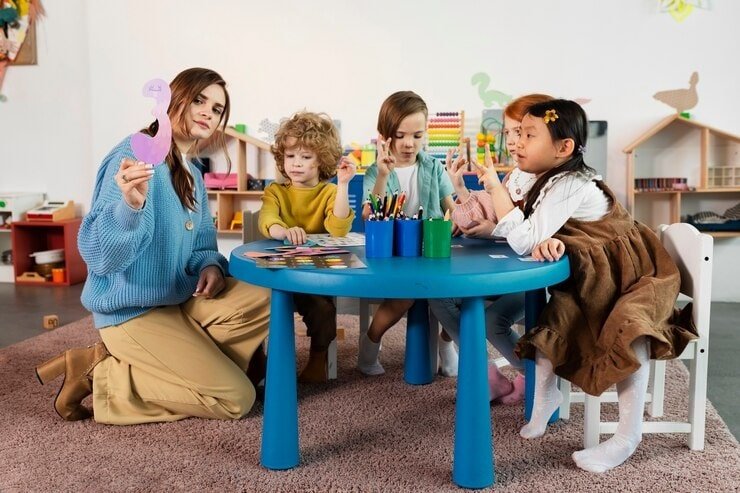
Ever noticed how some students seem to grasp concepts effortlessly, while others struggle to keep up? That’s because every learner is unique, with distinct learning styles, preferences, and needs. Personalized learning is a game-changer that recognizes and caters to these individual differences, empowering students to unlock their full potential.
Personalized learning offers numerous benefits for students, including improved engagement, deeper understanding, and better learning outcomes. This article will explore the key advantages of personalized learning strategies and how they can revolutionize the educational experience for every student.
Key Takeaways
- Personalized learning tailors instruction to individual learning styles, needs, and preferences, fostering engagement and motivation.
- It enables deeper understanding by allowing students to process information through multiple channels and learn at their own pace.
- Personalized learning strategies can tap into positive emotions, enhancing the learning experience and capacity to learn.
- Continuous assessment and feedback mechanisms allow students to reflect on their learning processes and refine study habits.
- Personalized learning accommodates diverse learning styles, promotes problem-solving abilities, and ultimately leads to improved academic achievement.
Understanding Personalized Learning
Let’s start by defining personalized learning and how it differs from traditional one-size-fits-all instruction. Personalized learning is an educational approach that tailors the learning experience to meet the unique needs, interests, and abilities of each individual student. Unlike the traditional classroom where all students receive the same instruction, personalized learning recognizes that every student is different and learns best in their own way.
Learning styles play a crucial role in personalized learning. Some students are visual learners who thrive on diagrams and illustrations, while others are auditory learners who prefer lectures and discussions. Kinesthetic learners learn best through hands-on experiences and practical applications. By understanding these diverse learning styles, personalized learning strategies can be tailored to ensure that each student’s unique needs are met, leading to more effective and engaging learning experiences.
Improved Engagement and Motivation
One of the most significant benefits of personalized learning is its ability to increase student engagement and motivation. When students are actively involved in the learning process and have a say in how they learn, they become more invested and engaged in their education.
Think about it – how often have you found yourself zoning out in a lecture or struggling to stay focused on a textbook? That’s because traditional, one-size-fits-all instruction can be boring and fail to capture the interests and learning styles of individual students. On the other hand, personalized learning strategies allow students to have a choice in their learning activities, fostering autonomy and a sense of ownership over their education.
For example, a personalized learning approach might involve project-based learning, where students work on real-world challenges that align with their interests and learning goals. By giving students a voice in their learning experience and allowing them to explore topics that excite them, personalized learning can significantly boost engagement and motivation.
Deeper Understanding of Material
Personalized learning doesn’t just keep students engaged; it also leads to a deeper understanding of the material being taught. This is where the Cognitive Theory of Multimedia Learning comes into play.
According to this theory, people learn more effectively when information is presented through multiple channels, such as visual and auditory. Personalized learning strategies can leverage this principle by allowing students to process information in various ways that align with their preferred learning styles.
For instance, a visual learner might benefit from interactive simulations or infographics, while an auditory learner could thrive with podcasts or group discussions. By catering to different learning modalities, personalized learning enables students to comprehend and retain information more effectively, leading to a deeper understanding of the subject matter.
Higher Positive Emotions
Learning isn’t just about acquiring knowledge; it’s also an emotional experience. Personalized learning strategies can tap into the powerful role of emotions in the learning process, leading to increased positive emotions and enhanced learning capacity.
The concept of Emotional Design suggests that emotions play a crucial role in how we perceive and interact with our environment, including educational experiences. When students feel engaged, motivated, and supported in their learning journey, they are more likely to experience positive emotions, such as excitement, curiosity, and a sense of accomplishment.
Personalized learning experiences can foster these positive emotions by tailoring instruction to individual interests, providing opportunities for self-expression, and celebrating individual achievements. For example, a personalized learning platform might offer badges or rewards for completing learning milestones, creating a sense of pride and accomplishment for the student.
By tapping into positive emotions, personalized learning can enhance students’ capacity to learn, retain information, and ultimately achieve better academic outcomes.
Improved Problem-Solving Abilities
In today’s rapidly changing world, problem-solving skills are more valuable than ever. Personalized learning strategies can play a pivotal role in developing these essential skills by providing students with opportunities to tackle real-world challenges and apply their knowledge in practical contexts.
Studies have shown that personalized learning can boost motivation, understanding, and teamwork, all of which contribute to improved problem-solving abilities. By allowing students to work on projects that align with their interests and learning styles, personalized learning fosters a deeper understanding of the material and its practical applications.
For instance, consider a personalized learning approach to a science class, where students work in small groups to design and conduct experiments based on their specific interests. This hands-on, project-based learning not only engages students but also encourages them to collaborate, think critically, and develop creative solutions to real-world problems.
Adaptability to Different Learning Styles
One of the key strengths of personalized learning is its ability to accommodate diverse learning styles and preferences. Every student learns differently, and a one-size-fits-all approach often fails to cater to these diverse needs.
Personalized learning strategies prioritize flexibility in the learning environment, allowing students to learn in ways that suit their individual learning modes. For example, some students may thrive in a traditional classroom setting, while others may benefit from online or blended learning opportunities.
By providing a range of learning resources and activities, personalized learning ensures that every student has access to the tools and support they need to succeed. For instance, a personalized learning platform might offer a variety of multimedia resources, such as videos, interactive simulations, and audio lessons, catering to different learning styles and preferences.
Continuous Assessment and Feedback
Personalized learning wouldn’t be complete without continuous assessment and feedback mechanisms. These tools play a crucial role in helping students reflect on their learning processes, identify areas for improvement, and refine their study habits based on their unique needs and styles.
Regular feedback from teachers and personalized learning platforms can provide valuable insights into a student’s strengths, weaknesses, and progress. This information can then be used to adjust the learning path and tailor instructional strategies to better support the individual student’s needs.
For example, a personalized learning platform might use data analytics to track a student’s performance and identify areas where they are struggling. Based on this information, the platform can then provide targeted feedback and suggest personalized learning activities or resources to help the student overcome those challenges.
By incorporating continuous assessment and feedback into personalized learning strategies, students can take an active role in their learning journey, developing self-awareness and the ability to adapt their approach to maximize their academic success.
Conclusion
Personalized learning is a transformative approach that recognizes and celebrates the unique needs, interests, and abilities of every student. By tailoring instruction to individual learning styles, fostering engagement and motivation, enabling deeper understanding, and promoting problem-solving abilities, personalized learning offers a path to improved academic achievement and lifelong learning success.
As educational institutions continue to embrace personalized learning practices, we can expect to see more engaged and motivated students, better learning outcomes, and a generation of learners equipped with the skills and mindset to thrive in an ever-changing world.
So, let’s embrace the power of personalized learning and empower every student to reach their full potential, one unique learning journey at a time.












